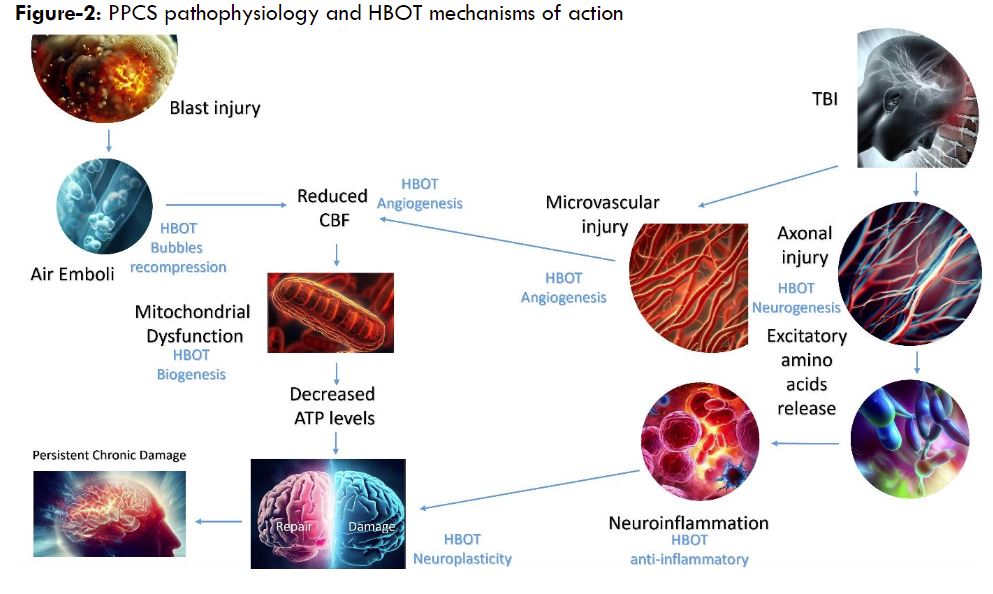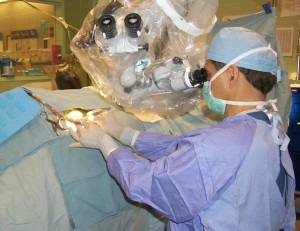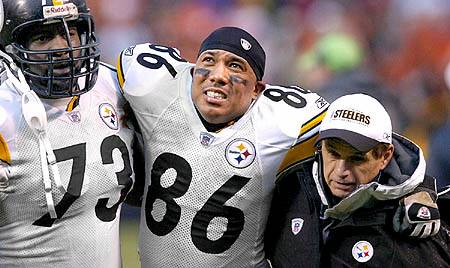Dr. Joseph Maroon Authors Article on Hyperbaric Oxygen Therapy in Traumatic Brain Injury Patients
July 31, 2023 US neurosurgeon and brain trauma expert, Dr. Joseph Maroon, along with Israeli researchers, Amir Hadanny and Shai Efrati, have published an article in the Medical Research Archives, entitled, The Efficacy of Hyperbaric Oxygen Therapy in Traumatic Brain Injury Patients: Literature Review and Clinical Guidelines. The review article reviews over 50 years of evidence of the use of hyperbaric oxygen therapy for patients with both acute and chronic traumatic brain injury. In addition, providing improved understanding of the uses of HBOT and the profiles of the patients who can benefit the most.
Results Highlights:
There is high level evidence including nine randomized controlled trials, one meta-analysis and two prospective studies demonstrating significant reductions in mortality resulting in favorable functional outcomes in survivors along with others showing mixed results as follows:
- Chronic severe traumatic brain injury – showed low to moderate evidence including two uncontrolled prospective studies, two cohort studies and eight case reports suggesting improved outcomes.
- Chronic mild traumatic brain injury – there is high level evidence including seven randomized controlled trials, and six prospective studies suggesting significant improvement in cognitive function, symptoms and quality of life.
The authors concluded that hyperbaric oxygen therapy may be recommended in acute moderate-severe traumatic brain injury patients (Type 2a recommendation, level A evidence). However, further studies are needed to both evaluate outcomes and to determine the optimal treatment protocols for the different types of injuries (Type 1 recommendation, level A evidence). Hyperbaric oxygen therapy should be recommended in chronic traumatic brain injury for a selected group of patients suffering from prolonged post-concussion syndrome who have clear evidence of metabolic dysfunctional brain regions as determined by neuroimaging (Type 2a recommendation, level B-R evidence). Patients should be properly evaluated by standardized cognitive tests and functional brain imaging (Type 1 recommendation, level B-R evidence).
Prolonged Post-Concussion Syndrome
In addition to the review results, the authors also discussed the pathophysiology of prolonged post-concussion syndrome (PPCS) and HBOT mechanisms of action to potentially help improve outcomes. (See graphic below)

Quote from Dr. Maroon, I would encourage both researchers and the public to read this article on the potential benefits of HBOT for head injury. There are over 3.8 million concussions per year in the US, and many suffer without ever seeking help. Help is available. Please seek out your healthcare provider and ask if hyperbaric oxygen therapy might be beneficial for you.
Background
According to the Centers for Disease Control and Prevention (CDC), traumatic brain injury (TBI) is a serious injury that can affect a person’s physical, cognitive, and emotional health. TBI can be caused by a blow to the head, a jolt to the head, or a penetrating injury to the brain. The CDC estimates that there are about 2.8 million TBIs in the United States each year. Of these, about 50,000 are fatal and about 300,000 result in long-term disability.
Concussions are a type of TBI that is caused by a sudden change in the head’s movement. Concussions can result in a variety of symptoms, including headache, nausea, vomiting, dizziness, confusion, and memory loss. The CDC estimates that there are about 3.8 million concussions in the United States each year. Of these, about 1.4 million occur in children and adolescents. The incidence of TBI and concussion is highest among young people. In fact, TBI is the leading cause of death and disability in people under the age of 45.
There are a number of risk factors for TBI, including:
- Falls: Falls are the leading cause of TBI in all age groups.
- Sports and recreation: Sports and recreation are the leading cause of TBI in children and adolescents.
- Motor vehicle crashes: Motor vehicle crashes are the leading cause of TBI in adults.
- Violence: Violence is a leading cause of TBI in all age groups.
There are a number of things that can be done to prevent TBI, including:
- Wear a helmet: Helmets are the best way to prevent TBI from sports and recreation-related injuries.
- Be safe in the home: Make sure your home is free of hazards that could cause falls.
- Drive safely: Obey traffic laws and don’t drink and drive.
- Avoid violence: If you are in an abusive relationship, get help.
If you think you or someone you know has suffered a TBI, it is important to seek medical attention immediately. Early diagnosis and treatment can help to reduce the risk of long-term complications.
Reference:
HadannyA, MaroonJ, et al., 2023. The Efficacy of Hyperbaric Oxygen Therapy in Traumatic Brain Injury Patients: Literature Review and Clinical Guidelines, Medical Research Archives, [online] 11(7). https://esmed.org/MRA/mra/article/view/4161/99193547124




 Dr. Maroon received an athletic scholarship to Indiana University in Bloomington, Indiana where as an undergraduate, he was named a Scholastic All-American in football. Dr. Maroon has successfully maintained his personal athletic interests through participation in 9 marathons and more than 72 Olympic-distance triathlon events. However, his greatest athletic accomplishment is his participation in 8 Ironman triathlons (Hawaii – 1993, 2003, 2008, 2010, 2013; Canada – 1995; New Zealand – 1997; Germany – 2000), where he usually finishes in the top 10 of his age group. Recently, in July 2012 and 2013, he finished second and third, respectively, in his age group in the Muncie, Indiana half Ironman triathlon. In October 2013 he completed his 5th World Championship Ironman in Kona, Hawaii.
Dr. Maroon received an athletic scholarship to Indiana University in Bloomington, Indiana where as an undergraduate, he was named a Scholastic All-American in football. Dr. Maroon has successfully maintained his personal athletic interests through participation in 9 marathons and more than 72 Olympic-distance triathlon events. However, his greatest athletic accomplishment is his participation in 8 Ironman triathlons (Hawaii – 1993, 2003, 2008, 2010, 2013; Canada – 1995; New Zealand – 1997; Germany – 2000), where he usually finishes in the top 10 of his age group. Recently, in July 2012 and 2013, he finished second and third, respectively, in his age group in the Muncie, Indiana half Ironman triathlon. In October 2013 he completed his 5th World Championship Ironman in Kona, Hawaii.